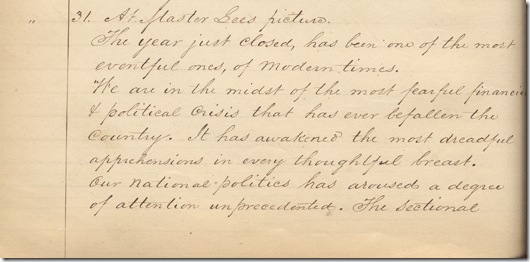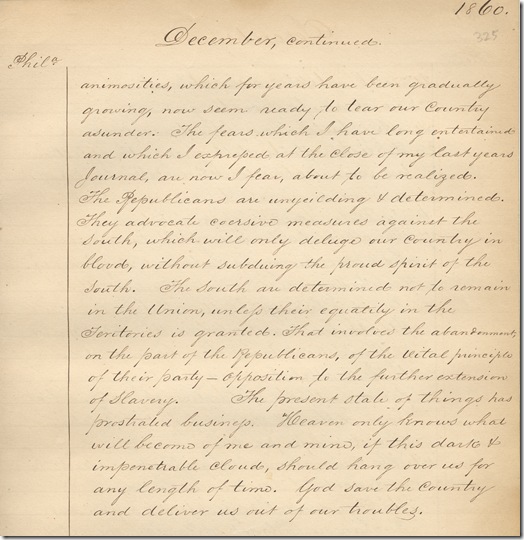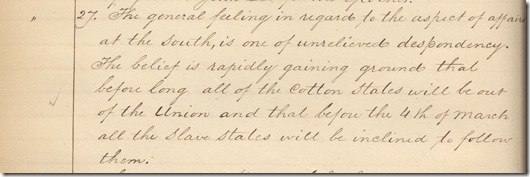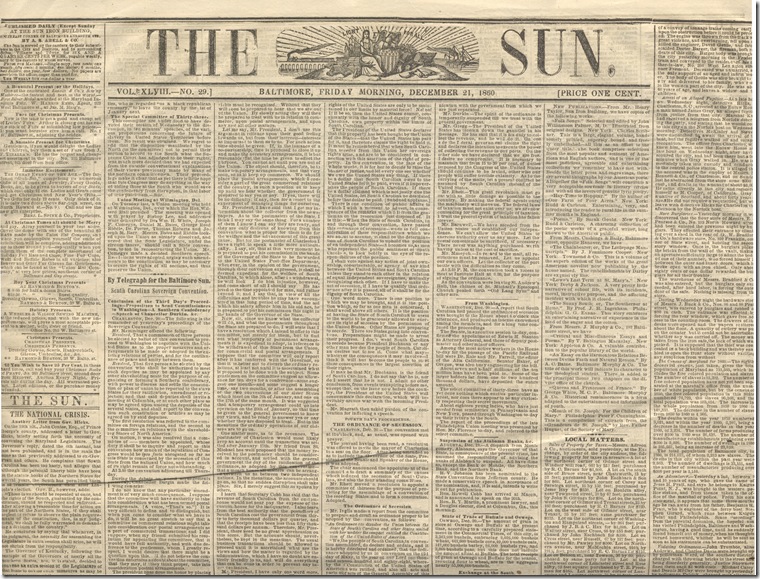John Henry Brown was a painter of portrait miniatures, living and working in Philadelphia. He had met Lincoln in August of 1860 when he was commissioned to paint Lincoln’s portrait for a supporter, but although Brown liked Lincoln personally, he did not agree with Republican policies.
Transcription:
At Master Lees picture.
The year just closed, has been one of the most eventful ones, of modern times.
We are in the midst of the most fearful financial & political Crisis that has ever befallen the country. It has awakened the most dreadful apprehensions in every thoughtful breast. Out national politics has aroused a degree of attention unprecedented. The sectional animosities, which for years have been gradually growing, now seem ready to tear our country asunder. The fears which I have long entertained and which I expressed at the close of my last years Journal, are now I fear, about to be realized. The Republicans are unyielding & determined. They advocate coercive measures against the South, which will only deluge our country in blood, without subduing the proud spirit of the South. The South are determined not to remain in the Union, unless their equality in the Territories is granted. That involves the abandonment on the part of the Republicans, of the vital principle of their party—opposition too the further extension of slavery. The present state of things has prostrated business. Heaven only knows what will become of me and mine, if this dark & impenetrable cloud, should hang over us for any length of time. God save the country and deliver us out of our trouble.
Citation: John Henry Brown (1818-1891), autograph journal/account book. Philadelphia, 1844-1890. AMs 574/14.1










